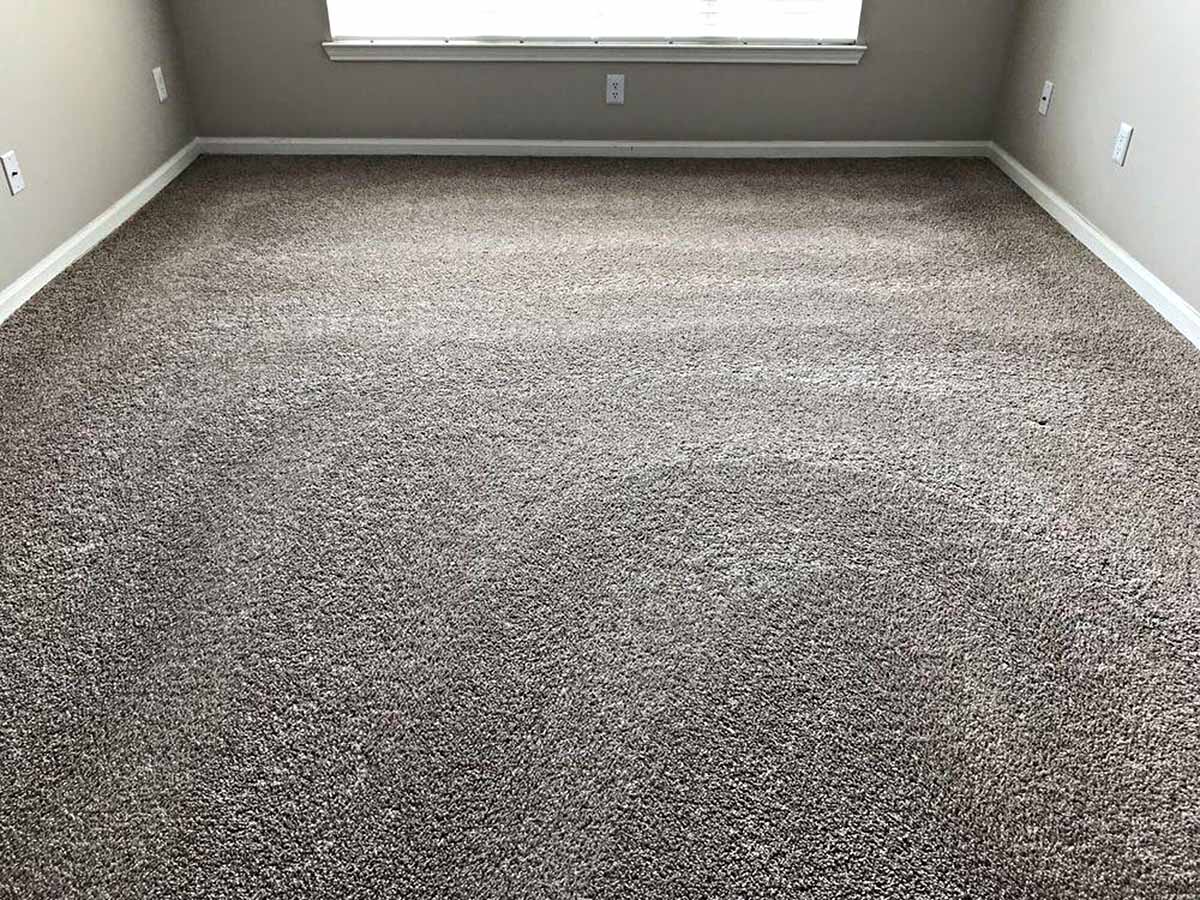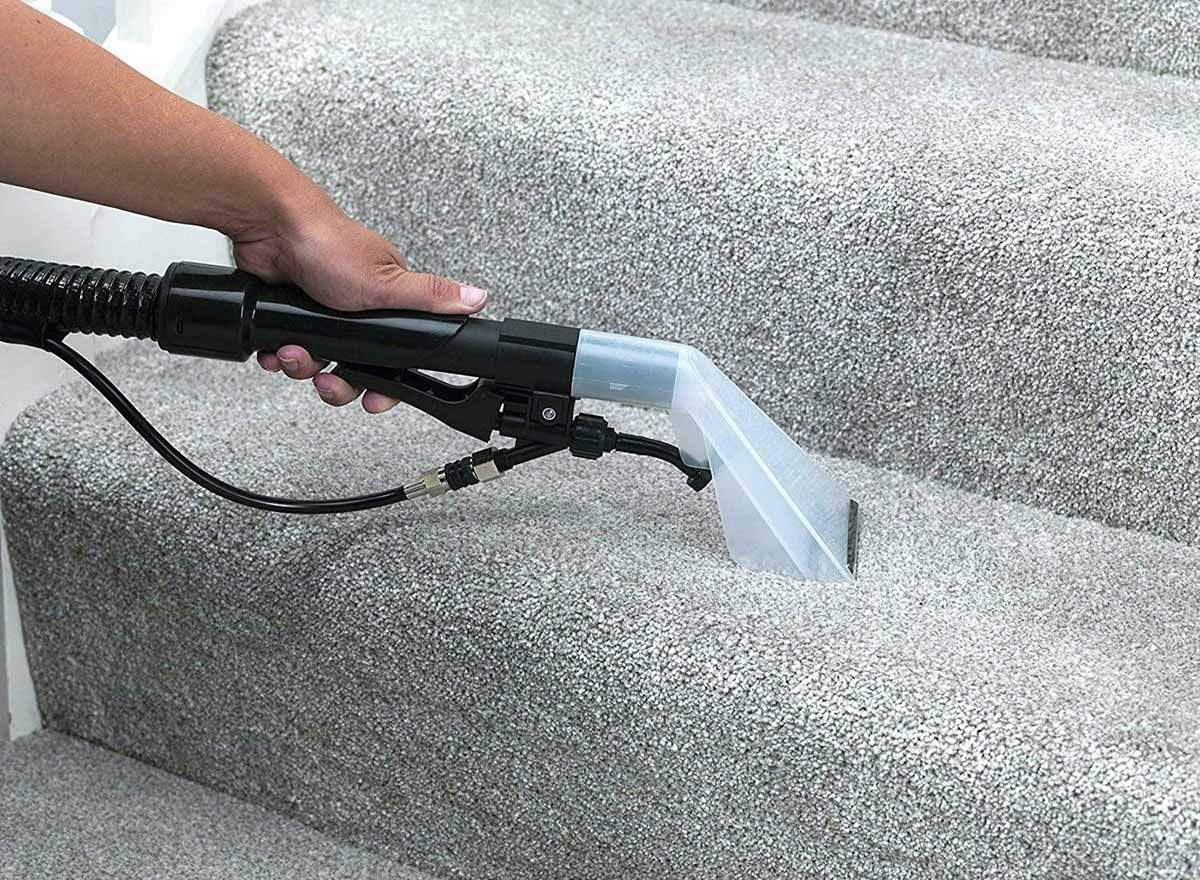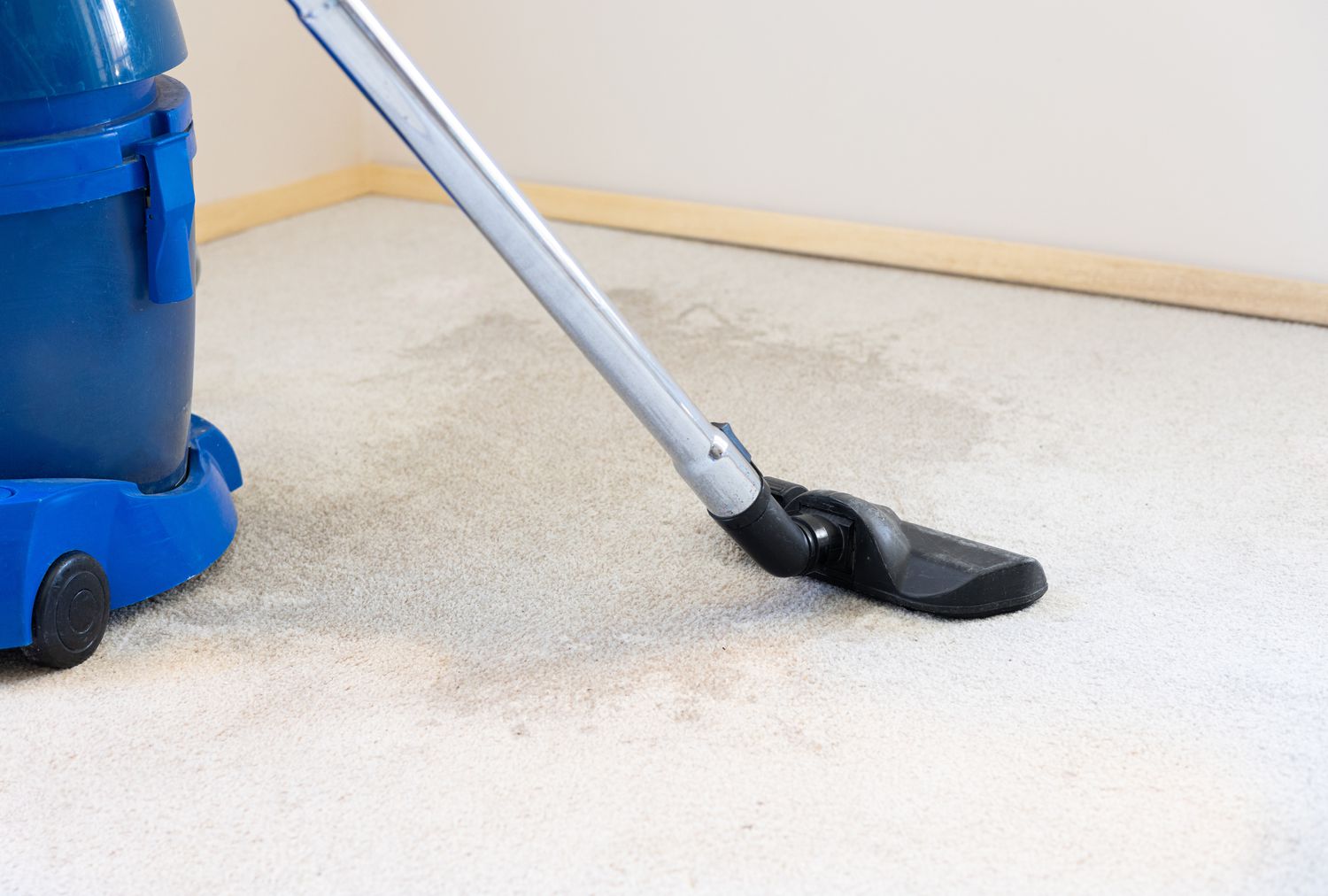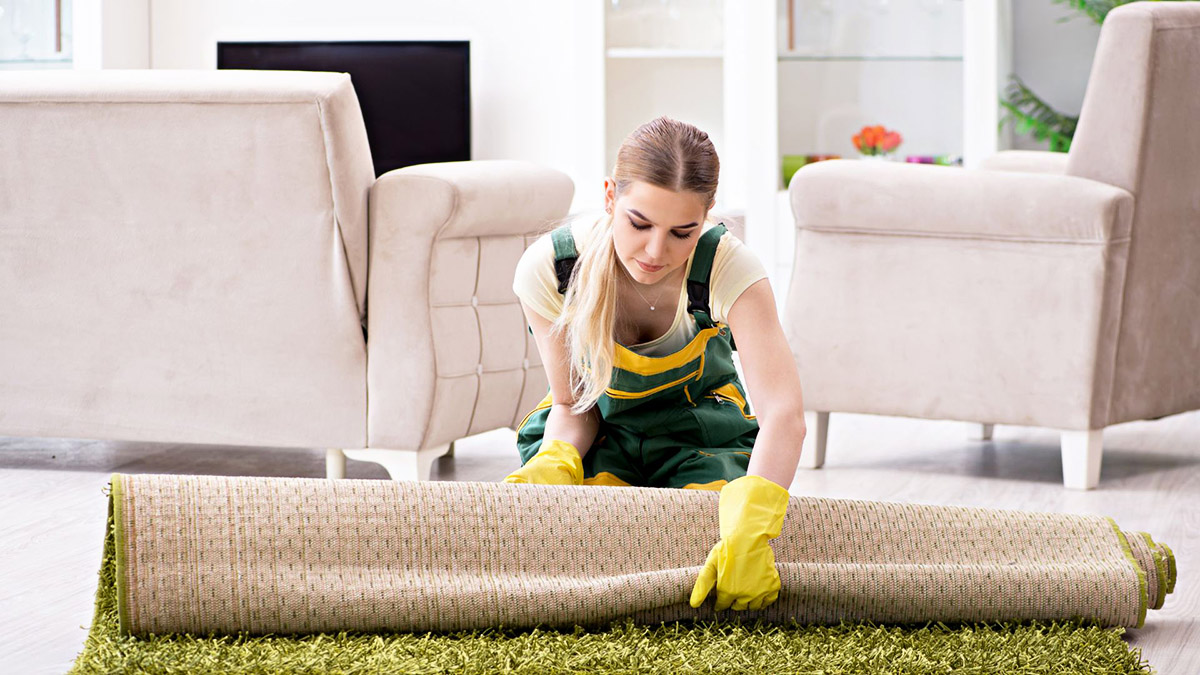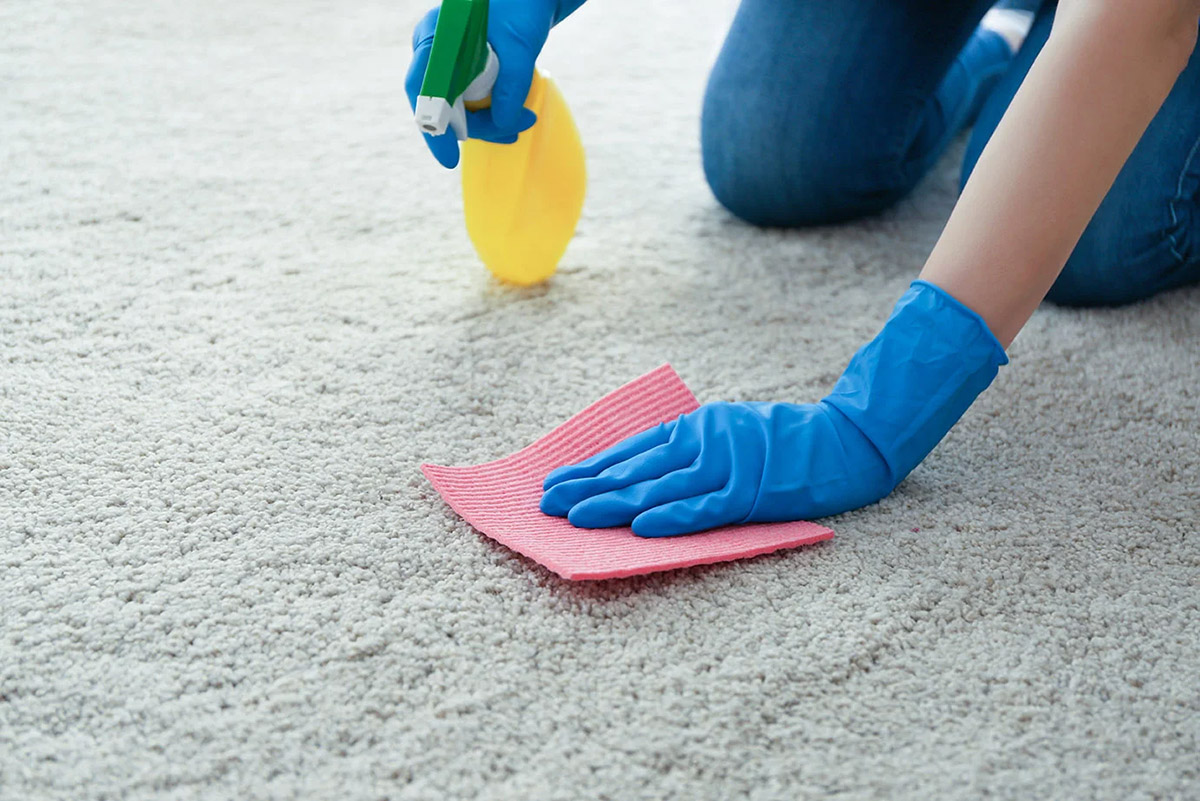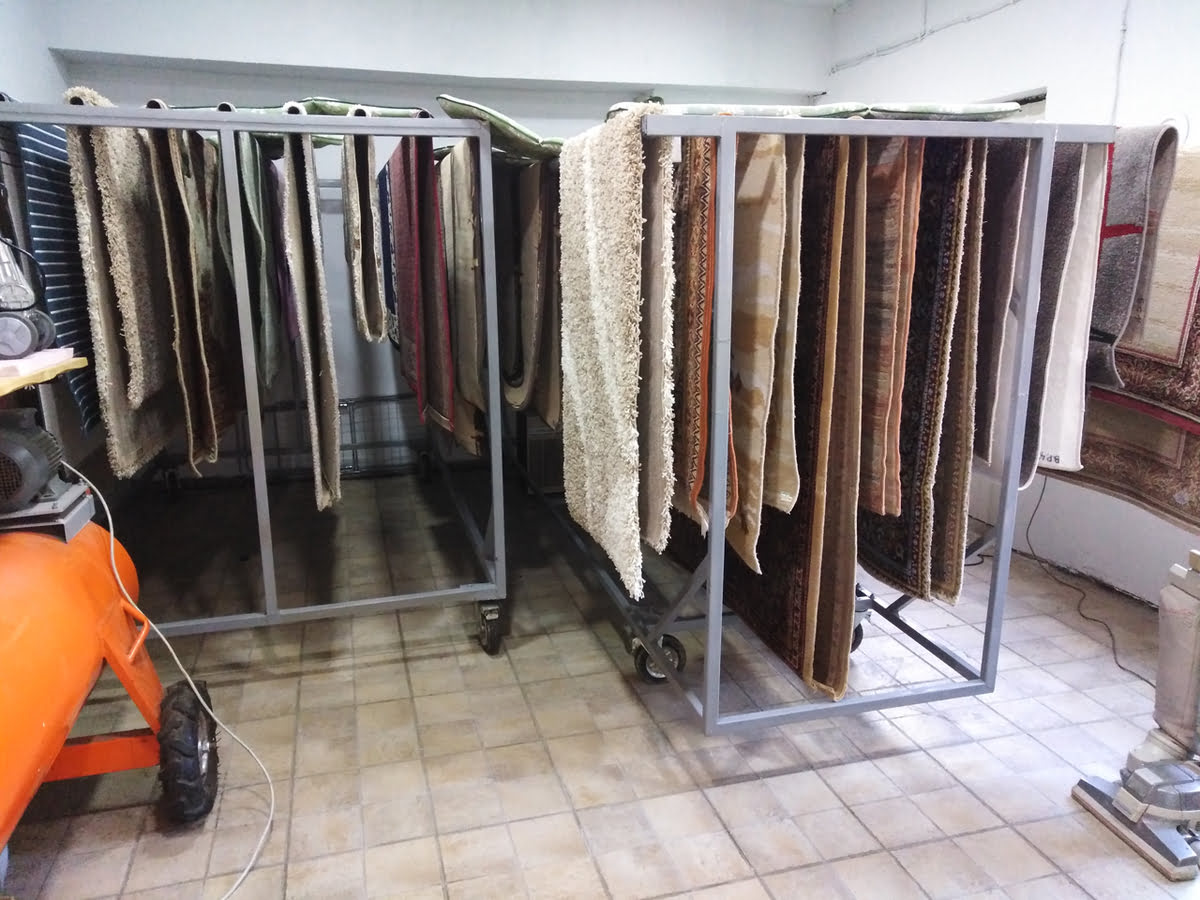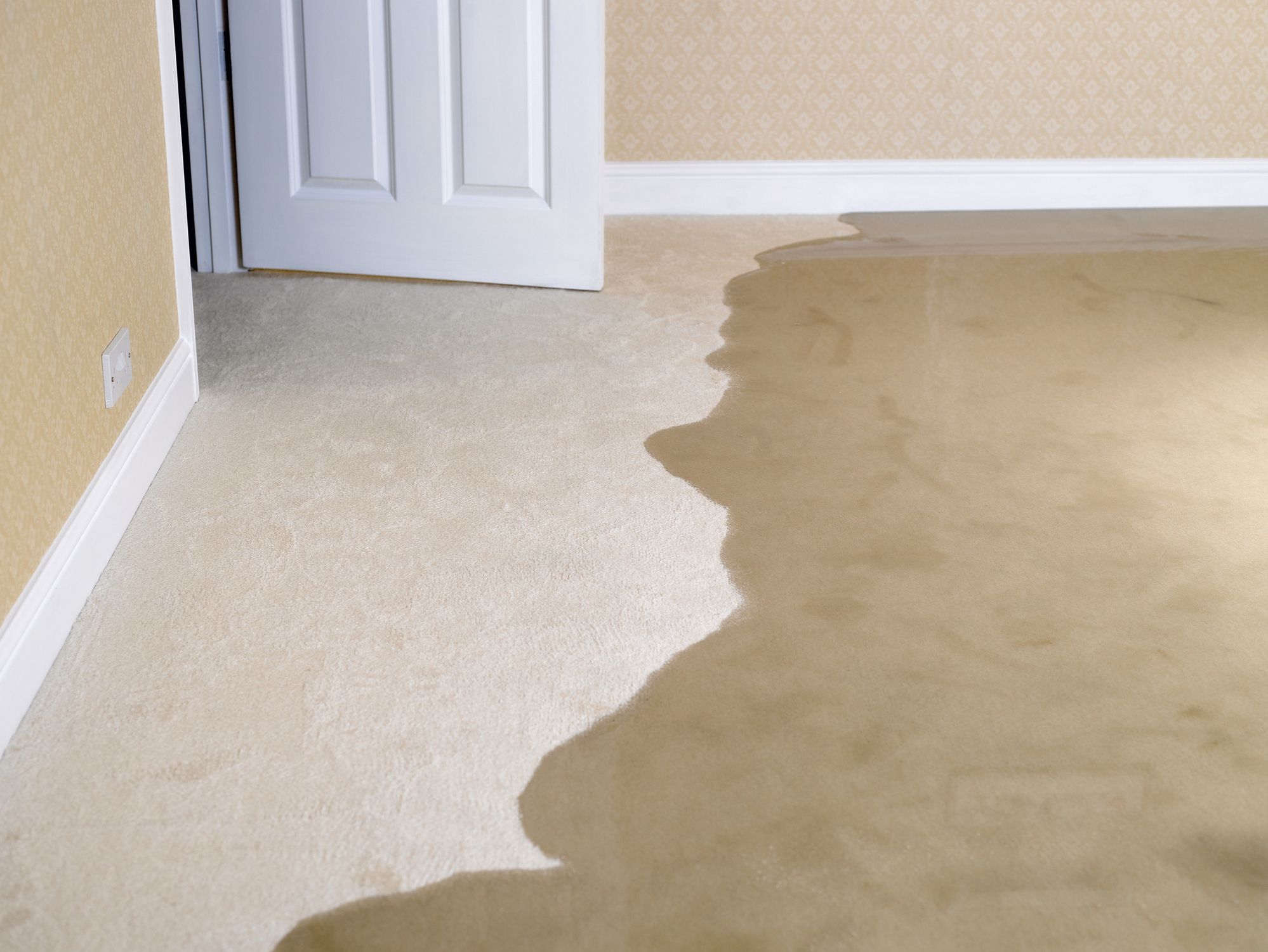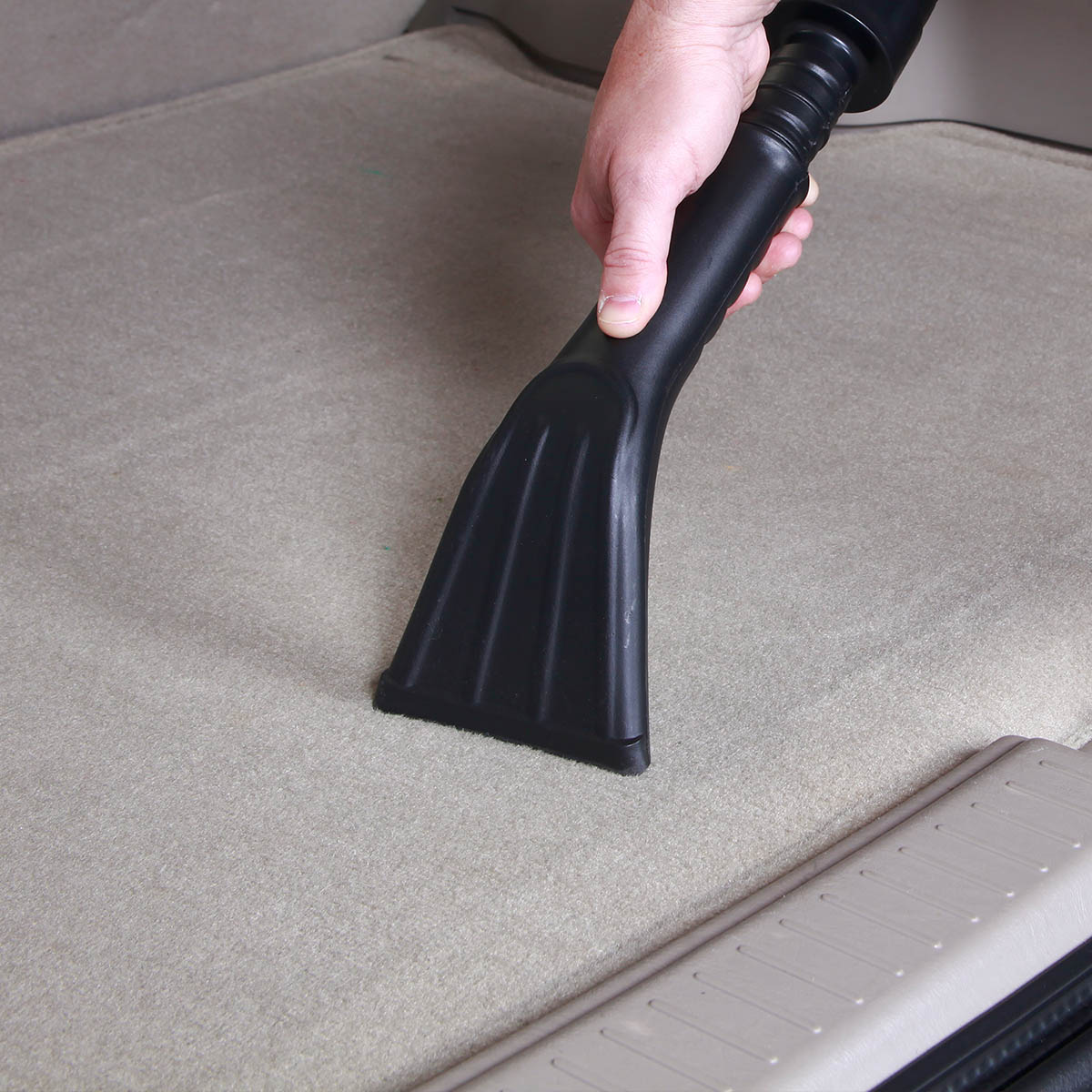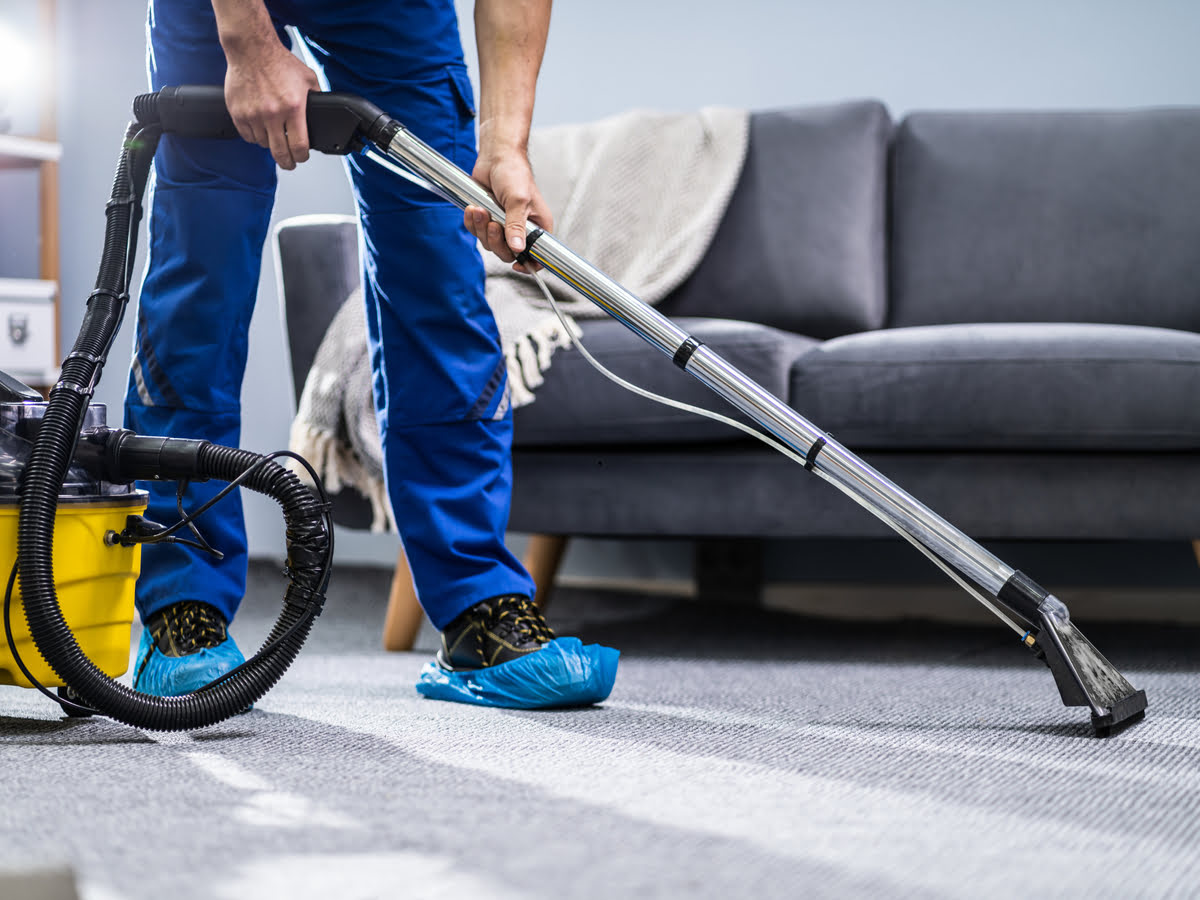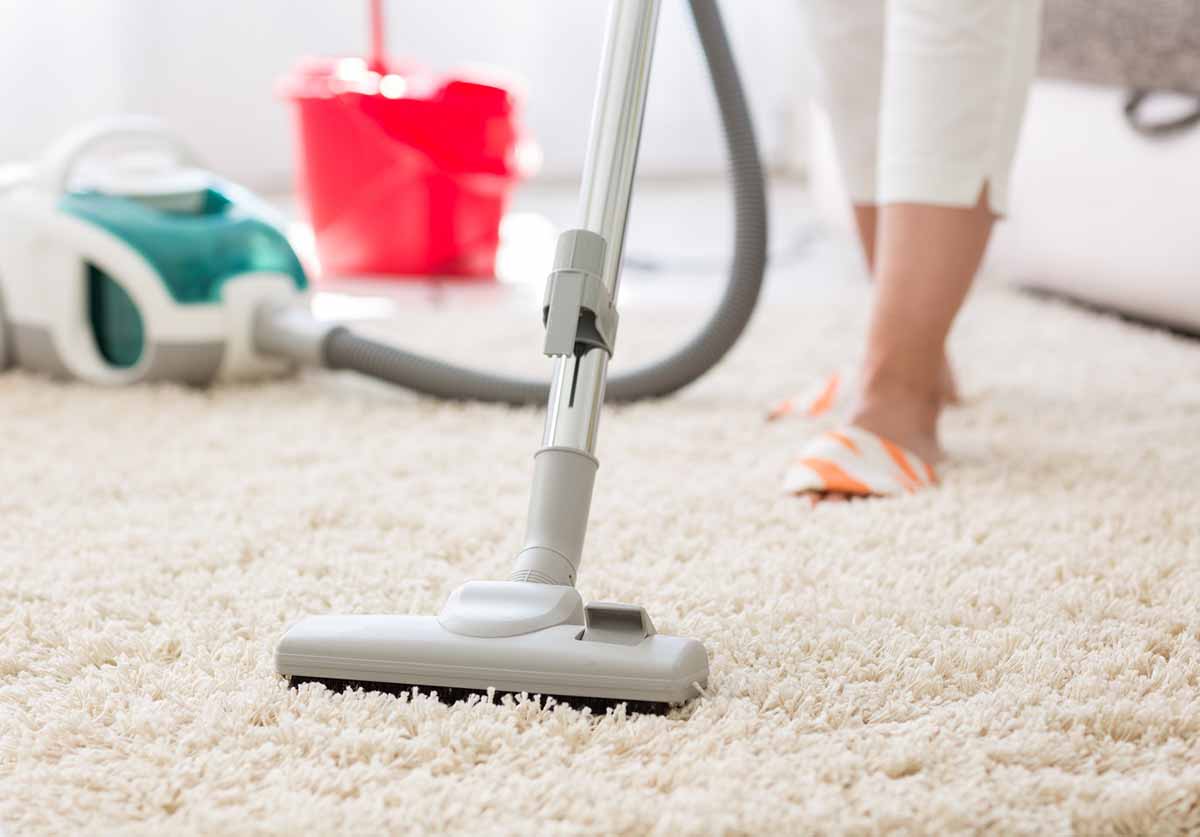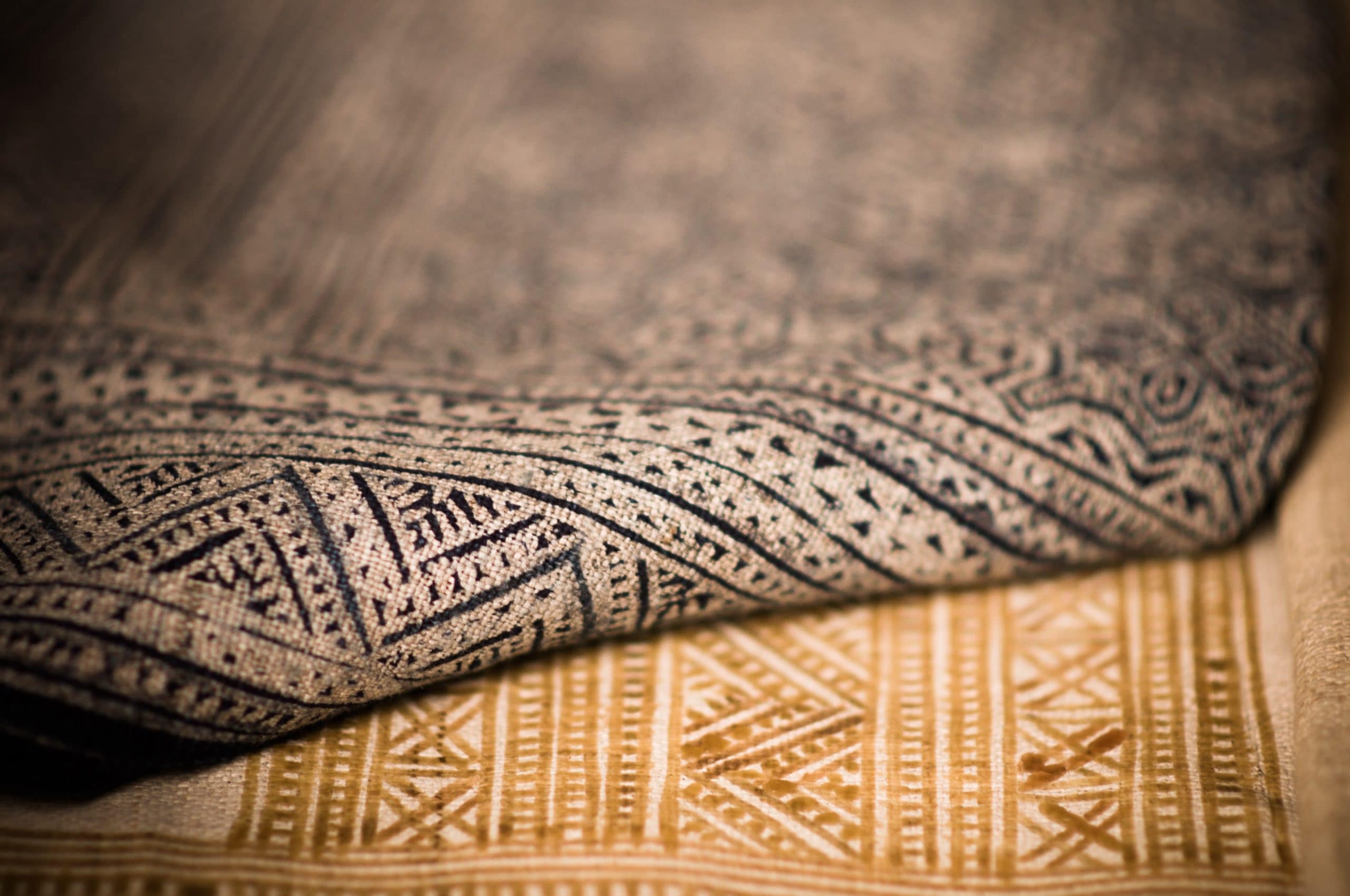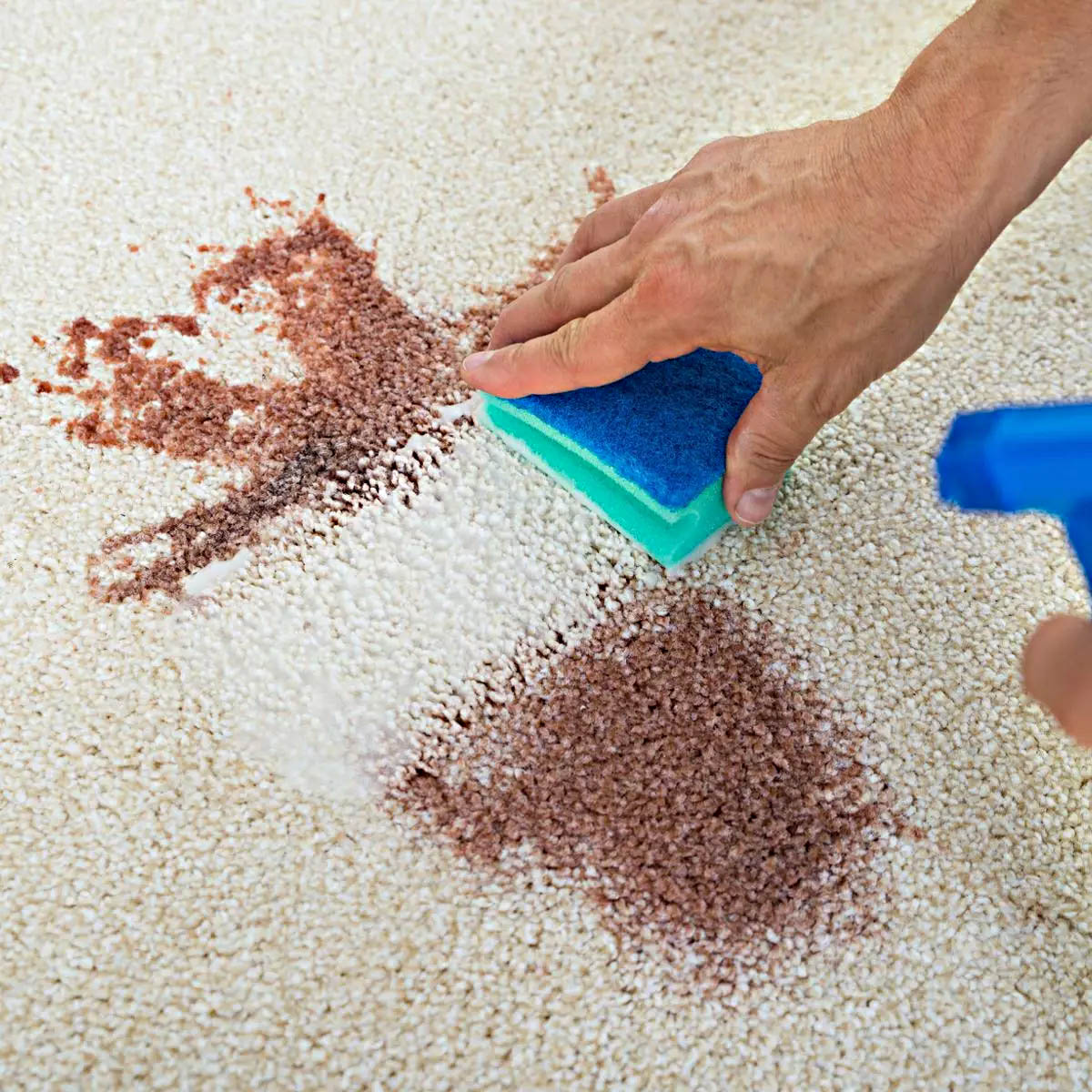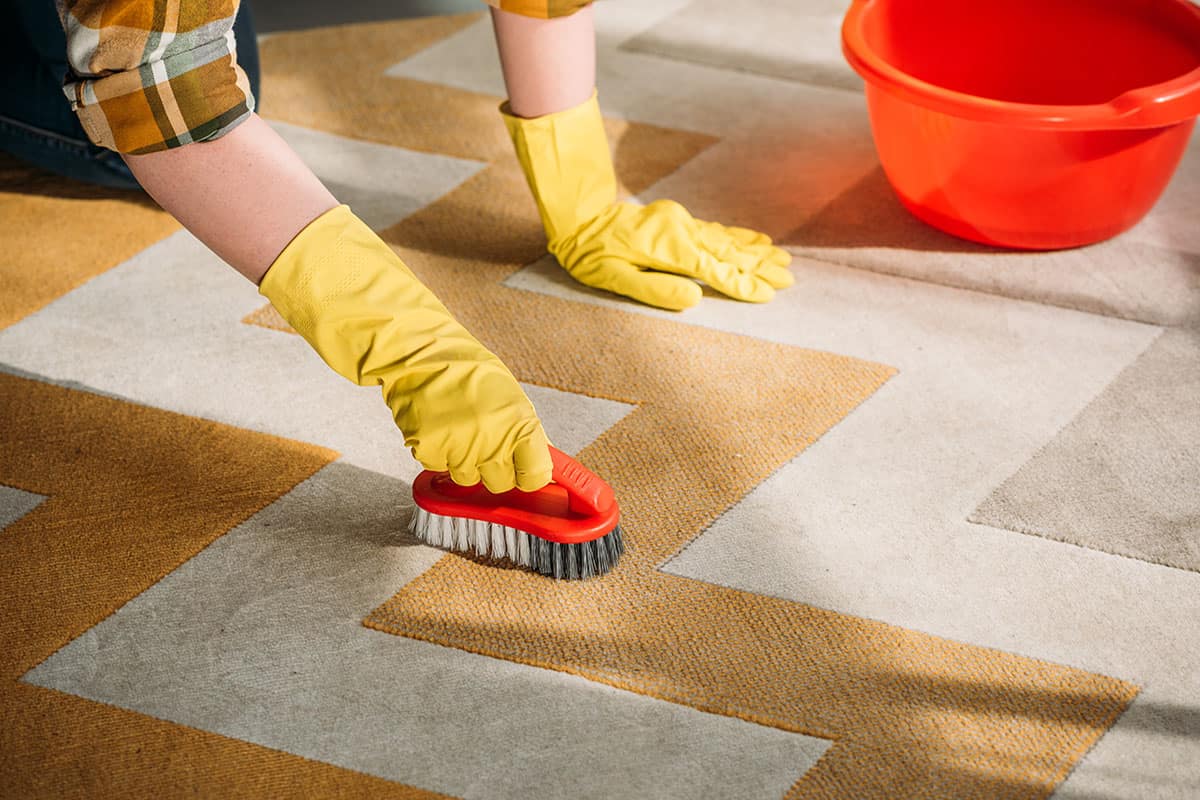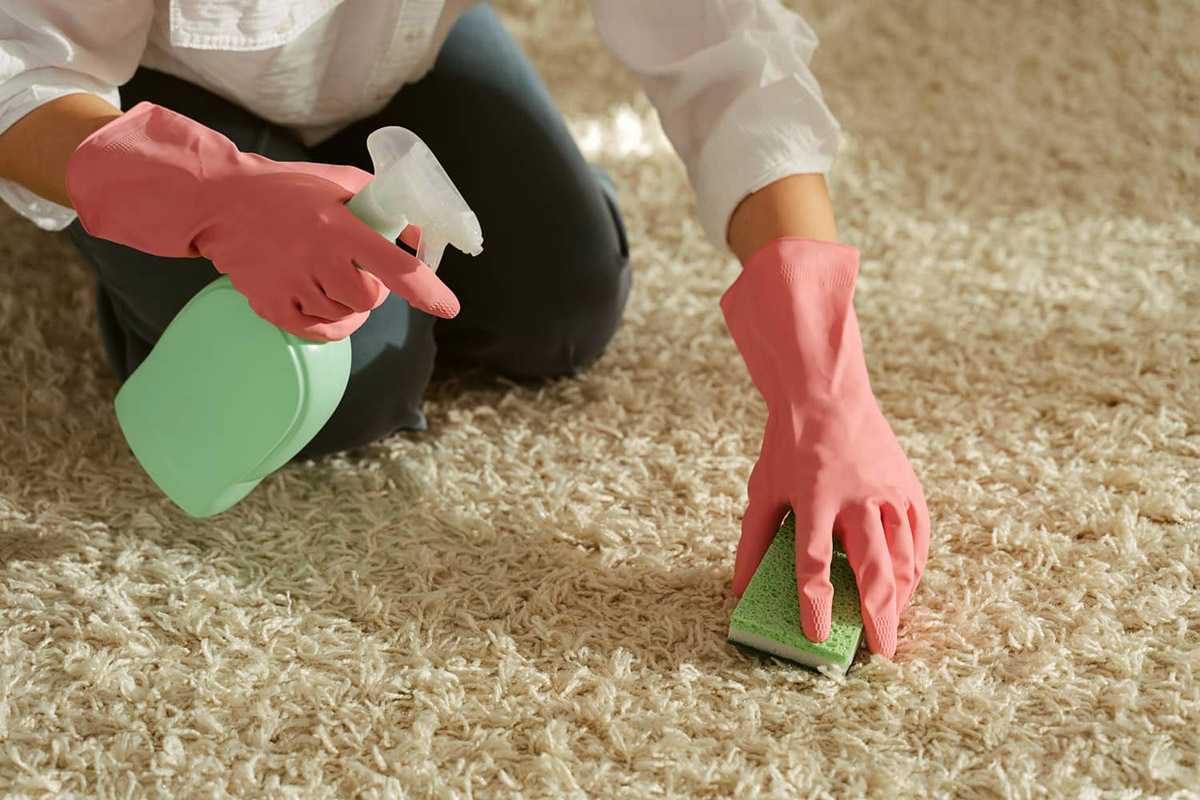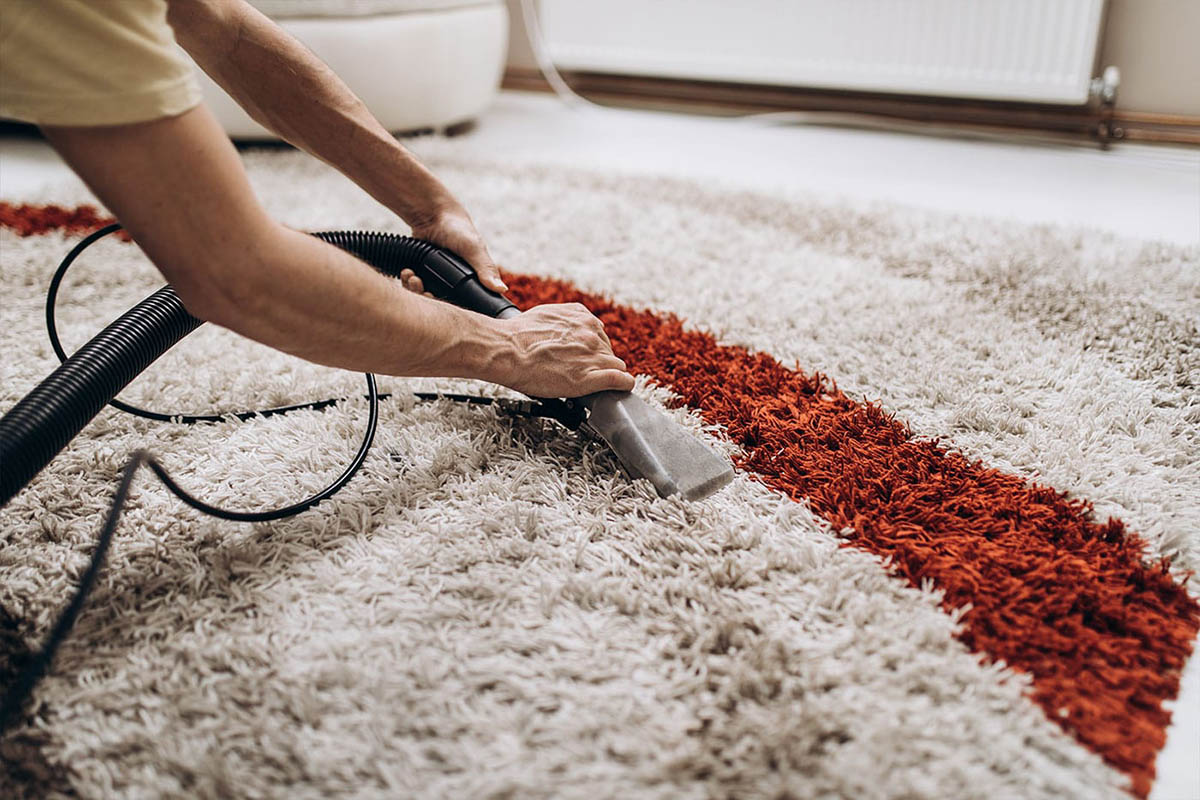

Articles
What Is Dry-Cleaning For A Carpet
Modified: February 23, 2024
Discover the benefits of dry-cleaning for your carpet with informative articles. Extend the lifespan of your carpet and maintain its pristine condition.
(Many of the links in this article redirect to a specific reviewed product. Your purchase of these products through affiliate links helps to generate commission for Storables.com, at no extra cost. Learn more)
Introduction
When it comes to taking care of your carpets, regular cleaning is essential to maintain their appearance and longevity. While vacuuming and spot cleaning are effective for day-to-day maintenance, there are times when your carpet needs a deeper and more thorough cleaning. This is where dry-cleaning comes in.
Dry-cleaning is a specialized method of cleaning carpets that involves using minimal or no water. Unlike traditional wet cleaning methods, dry-cleaning utilizes solvents and cleaning agents to remove dirt, stains, and allergens from the carpet fibers. This process not only cleans the carpet effectively but also helps in preserving its texture and preventing it from shrinking or losing color.
In this article, we will delve into the world of dry-cleaning for carpets, exploring the different methods, benefits, and considerations to help you make an informed decision. Whether you’re a homeowner looking to revitalize your carpets or a business owner aiming to maintain a clean and professional environment, dry-cleaning can be a game-changer.
So, let’s dive in and discover the wonders of dry-cleaning carpets!
Key Takeaways:
- Dry-cleaning for carpets is a specialized method that effectively removes dirt, stains, and allergens using minimal water, resulting in faster drying times and preserving the carpet’s appearance and longevity.
- Whether opting for professional dry-cleaning or DIY methods, regular dry-cleaning offers deep cleaning, faster drying, and numerous benefits, making it an essential practice for maintaining clean and healthy carpets.
Read more: What Is Steam Cleaning For A Carpet
How Does Dry-Cleaning Work?
Dry-cleaning for carpets follows a unique process that eliminates the need for excessive water and drying time. Instead of saturating the carpet with water, dry-cleaning relies on the use of specialized solvents and cleaning agents to break down and remove dirt, stains, and allergens. Here’s a step-by-step breakdown of how the dry-cleaning process works:
- Pre-inspection: A professional cleaner will begin by assessing the condition of the carpet and identifying any heavily soiled areas or stains that require special attention. This step helps determine the most suitable cleaning method and products to be used.
- Pre-vacuuming: Before applying any cleaning solution, the carpet is thoroughly vacuumed to remove loose dirt, dust, and debris. This step ensures that the dry-cleaning process can focus on deeper cleaning and stain removal.
- Spot treatment: Stubborn stains or heavily soiled areas are treated with specialized spot cleaners. These cleaners are designed to break down and lift stains without damaging the carpet fibers.
- Application of cleaning agents: Dry-cleaning solutions or powders are applied to the carpet using a specialized machine or dispenser. These cleaning agents work by attracting dirt and debris, which are then encapsulated and lifted from the carpet fibers.
- Abrasive action: To further enhance the cleaning process, the cleaning agent is agitated into the carpet fibers using a brush or an oscillating pad machine. This action helps to loosen embedded dirt and grime, allowing for easier extraction.
- Extraction: Once the cleaning agent has had sufficient dwell time, a powerful vacuum or extraction machine is used to remove the dirt, cleaning agent residues, and moisture from the carpet. This extraction step ensures that the carpet is left clean and almost dry.
- Grooming: After the extraction process, the carpet fibers are groomed using a grooming brush or rake. This step helps to restore the carpet’s appearance by re-aligning the fibers and giving them a uniform look.
- Drying time: Unlike wet cleaning methods that require several hours or even days for the carpet to dry, dry-cleaning significantly reduces the drying time. The minimal or no use of water means that the carpet can be walked on almost immediately after the cleaning process.
The dry-cleaning process offers a convenient and efficient way to clean carpets, especially in areas where quick drying times are crucial. It effectively removes dirt, stains, and allergens while minimizing the risk of mold or mildew growth. Additionally, the use of specialized cleaning agents and techniques ensures that the carpet’s integrity and appearance are preserved, making dry-cleaning an excellent choice for maintaining the beauty and longevity of your carpets.
Benefits of Dry-Cleaning for Carpets
Dry-cleaning for carpets offers a range of benefits that make it a popular choice among homeowners and businesses alike. Let’s explore some of the key advantages of dry-cleaning:
- Deep cleaning: Dry-cleaning penetrates deep into the carpet fibers, effectively removing dirt, dust, allergens, and even stubborn stains. The specialized cleaning agents used in the process break down the dirt and encapsulate it, making it easier to extract.
- Faster drying time: Unlike traditional wet cleaning methods that can leave carpets damp for hours or even days, dry-cleaning significantly reduces the drying time. Since minimal or no water is used, the carpets are left almost dry after the cleaning process, allowing for immediate use.
- No shrinking or color fading: Dry-cleaning minimizes the risk of carpet shrinkage and color fading. The absence of excessive water helps prevent the carpet fibers from swelling or shrinking, preserving their original shape and size. Additionally, the use of gentle cleaning solutions ensures that the colors of the carpet remain vibrant and vibrant.
- Prolongs carpet lifespan: Regular dry-cleaning helps extend the lifespan of your carpets. By removing dirt, dust, and debris that can cause damage or wear down the carpet fibers, dry-cleaning helps maintain the carpet’s structural integrity and appearance for years to come.
- Safe for delicate fabrics: Dry-cleaning is a safe and suitable cleaning method for delicate or sensitive carpet materials. Since water is not heavily used, there is a reduced risk of damage or discoloration to carpets made of natural fibers, such as wool or silk.
- Effective stain removal: Dry-cleaning is highly effective in removing stubborn stains from carpets. The specialized spot cleaners used during the process target specific stains, such as pet stains or food spills, and break them down, lifting them from the carpet fibers without leaving residue behind.
- Reduces allergens: Dry-cleaning helps eliminate allergens trapped in the carpet, such as dust mites, pollen, and pet dander. The cleaning process removes these allergens, creating a healthier indoor environment, particularly for individuals with allergies or respiratory conditions.
- Convenient and time-saving: Dry-cleaning is a convenient and time-saving solution for carpets. The reduced drying time means that you can have your carpets cleaned and back in use quickly, making it ideal for busy households or commercial spaces that cannot afford extended downtime.
With its deep cleaning capabilities, faster drying time, and numerous other benefits, dry-cleaning is an excellent choice for maintaining the cleanliness and longevity of your carpets. Whether you’re looking to revitalize your home or create a welcoming and professional environment in your business, dry-cleaning offers a reliable and efficient solution.
Preparing Your Carpet for Dry-Cleaning
Before scheduling a dry-cleaning service for your carpets, it’s important to properly prepare them to ensure the best possible results. Taking a few simple steps beforehand can make a significant difference in the effectiveness of the cleaning process. Here’s a guide on how to prepare your carpet for dry-cleaning:
- Remove furniture and objects: Clear the area of any furniture, rugs, or other objects that may obstruct the cleaning process. This allows the cleaner to access every inch of the carpet without any hindrance.
- Vacuum thoroughly: Prior to the dry-cleaning appointment, vacuum the carpet thoroughly to remove loose dirt, dust, and debris. This helps the cleaner focus on removing embedded dirt during the dry-cleaning process.
- Treat stains in advance: If you have noticeable stains on your carpet, it’s a good idea to treat them with a spot cleaner or stain remover before the dry-cleaning appointment. Follow the instructions on the cleaner and allow it to fully dry before the cleaning service.
- Remove fragile or delicate items: If there are any delicate or fragile items, such as decorative objects or electronics, in the room, it’s best to remove them or relocate them to a safe area to prevent any accidental damage during the cleaning process.
- Communicate special needs or concerns: If you have specific concerns or requests regarding your carpet, such as sensitive areas or previous damage, communicate them to the dry-cleaning service provider in advance. This ensures that they can address your needs appropriately.
- Clear the path to the carpet: Ensure that the path leading to the carpet is clear of any obstacles or clutter. This allows the cleaner to set up their equipment easily and efficiently.
- Secure pets: If you have pets, it’s a good idea to secure them in a different area of the house during the dry-cleaning process. Not only does this protect them from potential harm, but it also allows the cleaner to work without any disturbances.
- Follow any additional instructions: If the dry-cleaning service provider has provided you with specific instructions or guidelines, such as ventilating the area or keeping windows open, make sure to follow them for the best possible outcome.
By following these simple steps, you can help ensure a smoother and more effective dry-cleaning process for your carpets. Proper preparation allows the cleaner to focus on providing you with exceptional results and helps maintain the cleanliness and appearance of your carpets for years to come.
Dry-Cleaning Methods for Carpets
Dry-cleaning methods for carpets employ various techniques and technologies to effectively clean and refresh your carpets. Let’s explore some of the most commonly used dry-cleaning methods:
- Encapsulation: Encapsulation is a dry-cleaning method that involves using specialized cleaning agents that crystallize and surround dirt and stains. These encapsulated particles are then easily removed through vacuuming, leaving the carpet clean and almost dry. This method is known for its quick drying time and excellent stain removal capabilities.
- Bonnet Cleaning: Bonnet cleaning, also known as absorbent pad cleaning, involves applying a cleaning solution to the carpet and then using a rotating or oscillating machine with a bonnet pad. The pad absorbs the dirt and particles from the carpet fibers. This method is effective for regular maintenance cleaning but may not be suitable for heavily soiled carpets or deep stains.
- Dry Foam Cleaning: Dry foam is another method that relies on specialized cleaning solutions. The solution is applied to the carpet using a foam generator or machine. The foam is then worked into the carpet fibers, allowing it to encapsulate dirt and stains. After a short dwell time, the foam is extracted using a powerful vacuum, leaving the carpet clean and dry.
- Powder Cleaning: Powder cleaning, also known as dry compound cleaning, involves sprinkling a dry cleaning compound or powder onto the carpet. The powder is then worked into the carpet using a machine with rotating brushes or a pile lifter. The powder absorbs dirt and debris and is subsequently vacuumed, leaving the carpet refreshed and dry.
- Absorbent Compound Cleaning: In this method, an absorbent compound or powder is spread over the carpet. The compound is then agitated into the carpet using a machine with rotating brushes. The compound absorbs dirt and stains, and once dry, it can be vacuumed away, leaving the carpet clean and ready for use.
It’s important to note that while these dry-cleaning methods can be effective for regular maintenance and light cleaning, heavily soiled carpets or deep stains may require a more thorough wet cleaning process. Consulting with a professional carpet cleaner can help determine the most suitable method based on your carpet’s condition and cleaning needs.
Remember, each dry-cleaning method may have specific equipment and product requirements, so it’s essential to follow the manufacturer’s instructions or hire professional cleaners who are experienced in using these methods. With the right dry-cleaning approach, you can ensure that your carpets receive a thorough and effective cleaning, leaving them fresh, revitalized, and ready to enhance the beauty of your space.
To maintain the quality of your carpet, it’s important to have it dry-cleaned regularly. Dry-cleaning helps remove deep-seated dirt, stains, and odors without causing damage to the carpet fibers.
Professional vs. DIY Dry-Cleaning
When it comes to dry-cleaning your carpets, you have the option to either hire professional cleaners or take the do-it-yourself (DIY) route. Let’s examine the pros and cons of each approach to help you make an informed decision:
Professional Dry-Cleaning:
- Expertise and experience: Professional carpet cleaners have the knowledge, expertise, and experience to accurately assess your carpet’s condition and select the most appropriate dry-cleaning method. They are skilled in using specialized equipment and products, ensuring a thorough and efficient cleaning process.
- Quality results: Professional cleaners are equipped with high-quality equipment and professional-grade cleaning agents, allowing them to deliver superior cleaning results. They can effectively remove embedded dirt, stains, and allergens, leaving your carpets fresh, clean, and rejuvenated.
- Time-saving: Hiring professionals saves you valuable time and effort. They handle all aspects of the cleaning process, from preparation to cleaning to drying, allowing you to focus on other tasks or enjoy your day while your carpets are being cleaned.
- Access to professional equipment: Professional cleaners have access to powerful extraction machines and specialized tools that may not be readily available for DIY use. These machines can efficiently remove dirt and moisture from the carpet, resulting in a more thorough and effective cleaning.
- Peace of mind: With professionals handling the job, you can have peace of mind knowing that your carpets are in capable hands. They have the necessary skills and knowledge to tackle any challenges that may arise during the cleaning process, ensuring the best possible outcome.
DIY Dry-Cleaning:
- Cost savings: DIY dry-cleaning can be more cost-effective compared to hiring professionals, especially if you already own a carpet cleaning machine or have access to rental equipment. You have control over the products you use and can choose more budget-friendly options.
- Convenience: DIY dry-cleaning allows you to clean your carpets at your own convenience. You can schedule the cleaning based on your availability and avoid the hassle of coordinating with professional cleaners.
- Flexibility: DIY dry-cleaning gives you the freedom to experiment with different cleaning methods or products to find what works best for your carpets. You can tailor the cleaning process to address specific stains or areas of concern.
- Regular maintenance: DIY dry-cleaning is suitable for routine maintenance cleaning, where the carpets are not heavily soiled or have deep-set stains. Regularly cleaning your carpets DIY-style can help keep them looking fresh and extend their lifespan.
- Learning experience: Taking on the task of dry-cleaning your carpets yourself can be a learning experience. You can gain knowledge about carpet care and maintenance, allowing you to better understand how to keep your carpets in top condition.
Ultimately, the decision to opt for professional dry-cleaning or DIY dry-cleaning depends on various factors, such as the condition of your carpets, your budget, and your personal preference. If your carpets require deep cleaning or have stubborn stains, professional cleaning may yield better results. On the other hand, if your carpets are well-maintained and you’re comfortable handling the cleaning process yourself, DIY dry-cleaning may be a viable option.
Whichever route you choose, it’s important to follow proper cleaning techniques, use appropriate cleaning agents, and ensure thorough drying to maintain the cleanliness and longevity of your carpets.
Choosing a Dry-Cleaning Service for Your Carpet
When it comes to selecting a dry-cleaning service for your carpets, it’s crucial to choose a reputable and reliable provider. Here are some factors to consider when making your decision:
- Experience and expertise: Look for a dry-cleaning service with years of experience in the industry. A company that has been around for a while is likely to have the expertise and knowledge to handle various types of carpets and cleaning situations.
- Reputation and reviews: Research the reputation of the dry-cleaning service by reading online reviews and testimonials. Check popular review sites and social media platforms to get a sense of what previous customers have to say about their experiences. A service with positive reviews and high customer satisfaction is a good indicator of quality.
- Services offered: Consider the range of services offered by the dry-cleaning service. Do they specialize in dry-cleaning carpets, or do they offer a variety of cleaning services? Ensure that their expertise aligns with your specific carpet cleaning needs.
- Certifications and training: Inquire about the certifications and training that the technicians of the dry-cleaning service have. Certifications from recognized industry associations indicate that the technicians have received proper training and adhere to industry standards.
- Insurance coverage: Check if the dry-cleaning service has proper insurance coverage. This protects you in case of any damages to your carpets or property during the cleaning process.
- Equipment and technology: Inquire about the equipment and technology used by the dry-cleaning service. State-of-the-art equipment and advanced cleaning techniques can contribute to better cleaning results and a more efficient process.
- Green cleaning options: If eco-friendliness is important to you, inquire whether the dry-cleaning service offers green cleaning options. These methods utilize environmentally friendly cleaning agents and practices that are safe for your carpets and the planet.
- Price and value: While price should not be the sole determining factor, it’s important to consider the cost of the service. Compare prices from different providers to ensure that you’re getting a fair and competitive rate. Take into account the value offered in terms of quality, expertise, and customer service.
- Customer service: Assess the level of customer service provided by the dry-cleaning service. Are they responsive to inquiries? Do they provide detailed information and explanations about their services? Exceptional customer service can make the entire experience more pleasant and ensure that your concerns are addressed promptly.
By considering these factors and conducting thorough research, you can find a dry-cleaning service that meets your expectations and needs. Don’t hesitate to ask questions and clarify any doubts before making your decision. Remember, choosing the right service ensures that your carpets receive the best care and cleaning, preserving their beauty and prolonging their lifespan.
Frequently Asked Questions (FAQs) about Dry-Cleaning Carpets
Here are answers to some commonly asked questions regarding dry-cleaning carpets:
- Is dry-cleaning suitable for all types of carpets?
- How often should I have my carpets dry-cleaned?
- Can dry-cleaning remove all types of stains?
- Will dry-cleaning shrink my carpets?
- Is dry-cleaning safe for individuals with allergies or sensitivities?
- How long does it take for the carpets to dry after dry-cleaning?
- Can I walk on the carpet right after dry-cleaning?
- Can I do dry-cleaning myself?
Dry-cleaning is generally safe for most types of carpets, including synthetic fibers, wool, and delicate materials. However, it’s always best to consult with a professional cleaner or check the manufacturer’s guidelines to ensure that dry-cleaning is appropriate for your specific carpet.
The frequency of dry-cleaning depends on various factors, such as the amount of foot traffic, presence of pets or children, and the general level of dirt accumulation. As a general guideline, it’s recommended to have your carpets professionally dry-cleaned once or twice a year for regular maintenance.
Dry-cleaning methods are effective in removing many types of stains. However, it’s important to note that some deep-set stains or those caused by certain substances (such as red wine or oil) may require additional treatment or a different cleaning method. It’s best to address stains as soon as they occur and inform the dry-cleaning service provider about any specific stains you want to treat.
Dry-cleaning, when done correctly, should not cause shrinking of carpets. Since minimal or no water is used in the process, there is a reduced risk of the carpet fibers swelling or shrinking. Professional cleaners are experienced in using the appropriate cleaning agents and techniques to safeguard against any potential shrinkage.
Dry-cleaning methods can be beneficial for individuals with allergies or sensitivities as they effectively remove allergens trapped in the carpet, such as dust mites, pollen, and pet dander. However, if you have specific allergies or concerns, it’s important to inform the dry-cleaning service provider beforehand, as they can use hypoallergenic or green cleaning agents to minimize any potential reactions.
One of the advantages of dry-cleaning is that it significantly reduces the drying time compared to wet cleaning methods. In most cases, the carpets are left almost dry immediately after the cleaning process. However, factors such as humidity, ventilation, and the type of dry-cleaning method used can influence the drying time, so it’s best to follow the guidance provided by the dry-cleaning service provider.
Generally, you can walk on the carpet immediately after dry-cleaning. However, it’s advisable to wear clean socks or slippers to avoid transferring any dirt or oils to the freshly cleaned carpet. Additionally, be cautious of any damp or wet areas that may require additional drying time.
Yes, it’s possible to do dry-cleaning yourself using a variety of DIY dry-cleaning methods. However, it’s important to note that professional cleaners have the experience, expertise, and specialized equipment to achieve better results. DIY dry-cleaning may be suitable for regular maintenance cleaning or addressing small stains, but for deep cleaning or heavily soiled carpets, it’s generally recommended to hire professional services.
If you have any specific questions or concerns about dry-cleaning your carpets, don’t hesitate to reach out to a professional cleaner who can provide personalized advice and guidance based on your unique situation.
Conclusion
Dry-cleaning is a highly effective method for keeping your carpets clean, fresh, and in optimal condition. With its unique process of using minimal or no water, dry-cleaning removes dirt, stains, and allergens from deep within the carpet fibers, leaving them revitalized and almost dry in a shorter time compared to traditional wet cleaning methods.
In this article, we explored the various aspects of dry-cleaning for carpets, including how it works, the benefits it offers, and the different methods available. We also discussed the considerations for preparing your carpets before the dry-cleaning process and the factors to consider when choosing a dry-cleaning service.
Whether you decide to hire professional cleaners or take the DIY approach, it’s important to ensure that your carpets receive regular dry-cleaning to maintain their appearance and prolong their lifespan. Professional dry-cleaning provides expertise, high-quality results, and convenience, while DIY dry-cleaning offers flexibility and cost savings for routine maintenance.
Remember to follow proper care and maintenance practices in between dry-cleaning sessions, such as regular vacuuming and addressing stains promptly. This will help keep your carpets in optimal condition and further extend their longevity.
Ultimately, the choice of dry-cleaning method and service provider depends on your specific needs, budget, and preferences. Take the time to do your research, read reviews, and ask questions to make an informed decision that will ensure the best care for your carpets.
By investing in dry-cleaning for your carpets, you’re not only maintaining a clean and healthy living or working space but also preserving the beauty and value of your carpets for years to come.
Frequently Asked Questions about What Is Dry-Cleaning For A Carpet
Was this page helpful?
At Storables.com, we guarantee accurate and reliable information. Our content, validated by Expert Board Contributors, is crafted following stringent Editorial Policies. We're committed to providing you with well-researched, expert-backed insights for all your informational needs.
